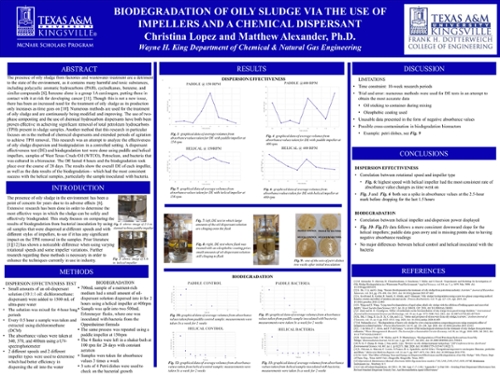The presence of oily sludge from factories and wastewater treatment are a detriment to the state of the environment, as it contains many harmful and toxic substances, including polycyclic aromatic hydrocarbons (PAH), cycloalkanes, benzene, and similar compounds [6]; benzene alone is a group 1A carcinogen, putting those in contact with it at risk for developing cancer [11]. Though this is not a new issue, there has been an increased need for the treatment of oily sludge as its production only increases as time goes on [10]. Numerous methods are used for the treatment of oily sludge and are continuously being modified and improving. The use of two-phase composting and the use of chemical hydrocarbon dispersants have both been proven effective in achieving significant removal of total petroleum hydrocarbons (TPH) present in sludge samples. Another method that this research in particular focuses on is the method of chemical dispersants and extended periods of agitation to achieve TPH removal. This research was an attempt to analyze the effectiveness of oily sludge dispersion and biodegradation in a controlled setting. A dispersant effectiveness test (DE) and biodegradation test were done using paddle and helical impellers, samples of West Texas Crude Oil (WTCO), Petroclean dispersant, and bacteria that was cultured in a bioreactor. The DE lasted 4 hours and the biodegradation took place over the course of 28 days. The results show the overall DE of each impeller, as well as the results of the biodegradation-- which had the most consistent success with the helical samples, particularly the sample inoculated with bacteria.
Faculty Mentor: Dr. Matthew Alexander
Department of Chemical and Natural Gas Engineering


